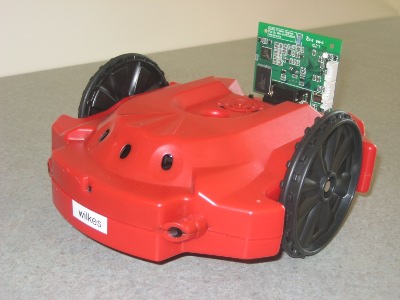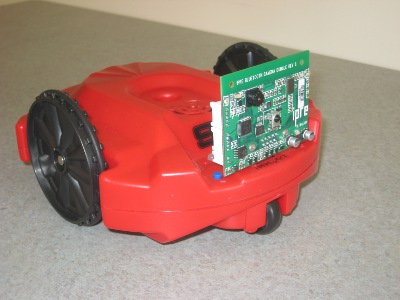Although general expectations of structure, documentation, and formatting
apply for all coursework, details vary according to the type of exercise.
This page provides detailed instructions for each type of activity.
|
| Laboratory Exercises
| Projects
| Supplemental Problems
|
| Collaboration
| Work in pairs strongly encouraged
| Work in pairs strongly encouraged
| Each problem must be done individually, without
consulting classmates, mentors, tutors, or other individuals (except the instructor).
|
| Header and Academic Honesty Certification
| The very beginning of every lab, project, and
supplemental problem must contain the following lines:
/***********************************************************************
* Name(s) (identify both lab partners for labs, projects) *
* Box(s): *
* Assignment name (Lab, Project, Sup. Problem Number _______) *
* (25% off if name/number does not match assignment) *
* Assignment for <due date> *
***********************************************************************/
/* *********************************************************************
* Academic honesty certification: *
* Written/online sources used: *
* [include textbook(s), CSC 115 labs or readings; *
* complete citations for Web or other written sources *
* write "none" if no sources used] *
* Help obtained *
* [indicate names of instructor, class mentors *
* or evening tutors, consulted according to class policy; *
* write "none" if none of these sources used] *
* ["none" required for Supplemental Problems *
* My/our signature(s) below confirms that the above list of sources *
* is complete AND that I/we have not talked to anyone else *
* (e.g., CSC 115 students) about the solution to this problem *
* *
* Signature: *
***********************************************************************/
No coursework can be accepted, if this certification is incomplete or if
the statement is not signed by ALL collaborators
involved.
|
| Font(s) and text formatting
|
- All code must use a fixed-width font (e.g., Courier). Use
of emacs, aquamacs, TextEdit (for
Macs), or NotePad/WordPad (for Windows 10) (with the
default font) is strongly encouraged.
- Use of variable-width fonts (e.g., from a word processing
package) is disqualifying for code — spacing with
variable-width fonts is unreliable, and code structure is likely
lost. Code using variable-width fonts will be returned without
grading.
- Output, if given, must utilize a fixed-width font.
- Commentary (e.g., answers to lab questions, discussions of
testing and correctness) may be in either a fixed-width font or a
variable-width font.
|
- Answers to questions should be numbered and in numeric order (e.g., the
answer to Step 1 should be numbered 1 and come before the answer to
Step 2).
- Explanations and answers to questions may be given in any word
processing
(e.g., emacs, vi, LibreOffice (for Linux),
pages (for Macs), Word (for Windows 10),
etc.)
- Answers involving code may be copied and pasted (with a
fixed-width font) into the general commentary or printed as
separate files. If code-based answers are separate, comments in
the code must specify the section for each answer.
- Commentary may involve either fixed-width fonts or
variable-width fonts.
|
- A complete program should be given as a single entity, unless
otherwise specified in the instructions; the program should not be
printed in pieces — various pieces on separate pieces.
- Commentary regarding testing should be given in a separate
file, not included within the complete program.
|
| Code
|
- Code should be divided into appropriate functions and
procedures. A simple block of code need not be encapsulated within a
function, but long, complex code segments should be organized into
pieces.
- Global variables are almost never appropriate. Use parameters to
send data to functions and procedures.
- Indenting of code must show the structure of the code.
- Indenting must be consistent.
- Code within a conditional statement must be indented within
the corresponding if or switch.
- Code within a loop must be indented.
- Code within a function must be indented within the function.
- Code within the same logical code segment must be
indented consistently.
- Each function and the main program must contain comments including
- A statement of what the function or program does
- A statement of any pre-conditions (or pre-conditions: none)
- A statement of post-conditions
- Code should contain comments to provide insight into the
structure and approach of a program.
-
Although programs need not be the most efficient possible,
inefficient code may not earn many points.
-
Sorting normally should use an insertion sort (as covered in
this course).
-
If another sorting algorithm is to be considered, approval in
advanced is needed from the instructor.
-
Bubble sort is never appropriate in any context, since it is
remarkably inefficient. Any program containing a bubble sort
will immediately be give 0 points.
|
| Commentary
| When laboratory exercises ask questions, answers should
be written in careful English. Normally, this requires full sentences.
Points may be lost for incorrect spelling, poor grammar, etc.
|
- Commentary within a program should describe any complex data
structures and identify main steps of a complicated algorithm.
There is no need to repeat simple steps in code, but clarification
is important when data structures or algorithms are complex.
- A separate commentary should describe how one knows a program is
correct. As with any writing, this commentary should be logically
structured and carefully written.
No electronic submissions are expected for labs!
|
| Testing
| Informal testing is appropriate for laboratory
exercises. A formal write up is not needed. However, turning in code
for a Step in a lab implicitly certifies that the code has been
tested. Errors in code (without explicit commentary regarding a
difficulty or failure of a test case) may lose significant points.
| Unless special instructions are given, projects involve
the use of robots, and often the result of the program cannot be
copied into a testing commentary. However, tests can be described.
-
If the program always does the same activities (e.g., plays a
song), describe what the robot does and why you think this is the
proper result.
-
If the robot reacts to input or its environment, describe the
situations that can occur, how you tested each circumstance, and
how the robot responded.
For example, if the robot is to move and avoid obstacles, testing
should identify that no obstacles might be present, a obstacle may
exist on the left, an obstacle on the right, or an obstacle on
both left and right. In each case, commentary should describe
what tests were run and how the robot reacted.
| Supplemental problems apply problem solving in C to
non-robot-based problems. These problems must be tested
systematically, and the results of the tests collected and submitted.
- All code must be tested; commentary must address the basic
question of how you know the code is correct.
- Commentary that simply repeats the logic of the program does
not address correctness. If the logic in a program is faulty,
simply stating the logic again does not make it correct.
- Evidence based on testing must be described.
-
What circumstances can arise in the problem?
-
What test cases have been devised to check those
circumstances?
-
What results does the program produce for those test cases?
For example, program output should be copied into your
commentary. In order to analyze the output, be sure to
include a clear statement of what input was used for each test.
-
Are the results correct, and how do you know?
|
| Submission logistics
|
|
-
Turn in a printed copy of your program, relevant output, and a
discussion of testing.
-
A printed copy of the program should be on top.
(Since your name, box, etc. are required to be at the
start of the program, this printout will identify that this is
your work.)
-
If your work involves several files, list the main program
first; then list any supplementary files.
-
Write a separate statement, not in the program, that documents
the testing process for this program. The statement should
include:
-
A numbered listing of the circumstances that can
reasonably arise in this problem.
-
For example, if a program is to categorize data, the
listing should include a statement of the categories;
If some category could be obtained in several ways,
the statement should identify each circumstance that
could lead to the category.
-
As another example, if the order of initial data might
impact processing, then the listing should include
circumstances to test the order of input data.
-
A listing of test cases to be considered, with the
expected outcome.
-
For each numbered item in the listing of possible
circumstances, there should be a corresponding test
case identified.
-
Each test case should be specific, including what data
will be considered and what output is expected.
-
Compile your program with the gcc command, and run it.
-
If the program does not use the Scribbler 2, include the
full range of test cases that demonstrate the correctness
of your program. (You should print the full interaction
from the terminal during the test runs.)
-
If the program uses the Scribbler 2, include a description
of what test runs you used and what results you obtained.
-
The actual test runs should follow the above listing of test cases.
-
Each test run should be annotated (writing on the printout
is acceptable), identifying which test case is being run
and whether or not the output produced is correct.
-
Once testing is completed, prepare a separate statement that
argues why your program is correct, based upon the evidence
from your test runs.
|
|
| Laboratory Exercises
| Projects
| Supplemental Problems
|


